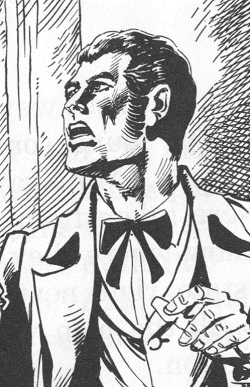This article has multiple issues. Please help improve it or discuss these issues on the talk page . (Learn how and when to remove these messages)
|
| Arthur Holmwood | |
|---|---|
| Dracula character | |
 Art by Pablo Marcos | |
| First appearance | Dracula |
| Created by | Bram Stoker |
| In-universe information | |
| Alias | esquire |
| Species | Human |
| Gender | Male |
| Title | Arthur |
| Spouse | Lucy Westenra Unnamed second wife |
| Relatives | Lord Godalming (father, deceased) |
| Nationality | English |
Arthur "Art" Holmwood (later Lord Godalming) is a fictional character in Bram Stoker's 1897 novel Dracula .
